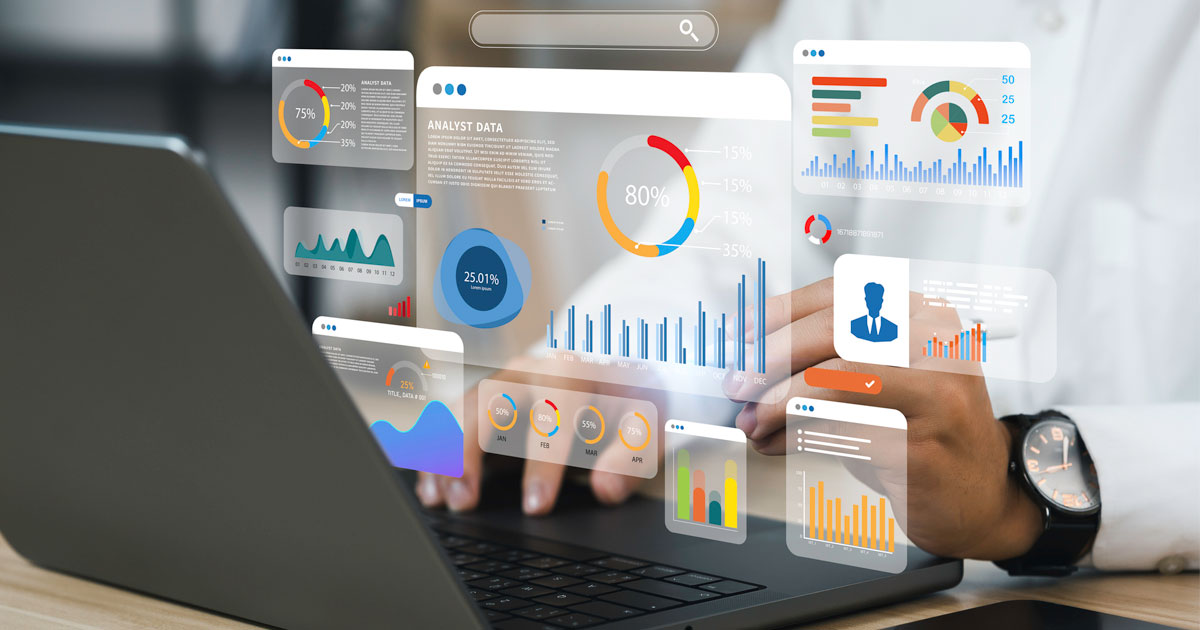Table of Contents
ToggleIn today’s digital landscape, data is no longer just a buzzword – it’s the fuel that powers businesses forward. But with the sheer volume of data available, making sense of it all can be overwhelming. That’s where data aggregation comes in as a secret weapon, enabling organizations to extract insights and make informed, data-driven decisions.
Data aggregation involves collecting data from various sources, consolidating it, and organizing it in a meaningful way. This process provides businesses with a comprehensive view of their operations, customers, and market trends. Whether it’s analyzing sales data, customer behavior, or market research, data aggregation allows companies to uncover patterns and trends that could otherwise go unnoticed.
By utilizing data aggregation, businesses can harness the power of their data to drive smarter decision-making. It enables them to identify opportunities, uncover hidden risks, and optimize their strategies for better outcomes. From improving customer experiences to optimizing supply chains, data aggregation empowers organizations to stay ahead of the competition in a data-driven world.
In this article, we will explore the importance of data aggregation, its benefits, and how businesses can leverage it to gain a competitive advantage. So, let’s dive deeper into the world of data aggregation and unlock its potential for better decision-making.
What is Data Aggregation?
Data aggregation involves collecting data from various sources, consolidating it, and organizing it in a meaningful way. This process provides businesses with a comprehensive view of their operations, customers, and market trends. Whether it’s analyzing sales data, customer behavior, or market research, data aggregation allows companies to uncover patterns and trends that could otherwise go unnoticed.
Data aggregation can be done manually, where data analysts collect and compile data from different sources, or it can be automated using software tools that streamline the process. The goal is to bring together diverse datasets and transform them into meaningful information that can drive decision-making.
Importance of Data-Driven Decision Making
Data-driven decision making is crucial for businesses in today’s competitive landscape. By utilizing data aggregation, businesses can harness the power of their data to drive smarter decision-making. It enables them to identify opportunities, uncover hidden risks, and optimize their strategies for better outcomes.
Data-driven decision making also helps businesses stay agile and responsive to changing market conditions. By relying on data rather than gut instincts or guesswork, organizations can make more informed and accurate decisions that align with their goals and objectives.
Challenges of Data Aggregation
While data aggregation offers numerous benefits, it also comes with its fair share of challenges. One of the main challenges is the sheer volume and complexity of data available. With the exponential growth of data, organizations need to ensure they have the right infrastructure and tools in place to handle and process large datasets.
Another challenge is data quality. Data aggregation relies on the accuracy and completeness of the data being collected. If the underlying data is flawed or incomplete, it can lead to inaccurate insights and flawed decision-making. Organizations need to invest in data governance and quality assurance processes to ensure the data being aggregated is reliable.
Benefits of Using Data Aggregation Tools
Data aggregation tools offer several benefits to organizations looking to harness the power of their data. These tools automate the data collection and consolidation process, saving time and effort for data analysts. By eliminating manual processes, organizations can focus on analyzing the data and extracting actionable insights.
Data aggregation tools also provide organizations with a centralized platform to store and manage their data. This ensures data consistency and allows for easy access and retrieval when needed. Additionally, these tools often come with built-in data visualization capabilities, making it easier for stakeholders to understand and interpret the data.
Steps to Implement Data Aggregation in Your Organization
Implementing data aggregation in your organization requires a systematic approach.
Here are some steps to consider:
- Define your objectives: Clearly define what you hope to achieve through data aggregation. Determine the key metrics and indicators that will drive your decision-making process.
- Identify data sources: Identify the various sources of data that are relevant to your objectives. This can include internal systems, external databases, social media platforms, and more.
- Design your data model: Design a data model that will structure and organize your aggregated data. Consider the relationships between different datasets and how they will be integrated.
- Select the right tools: Choose data aggregation tools that align with your organization’s needs and capabilities. Consider factors such as scalability, security, ease of use, and integration with existing systems.
- Clean and validate your data: Before aggregating the data, ensure that it is clean and accurate. Remove duplicate entries, correct errors, and validate the data against established quality standards.
- Aggregate and analyze: Use your chosen data aggregation tools to bring together the data from different sources. Analyze the aggregated data to extract insights and identify patterns and trends.
- Communicate and act: Once you have extracted insights from the aggregated data, communicate the findings to relevant stakeholders and act based on the insights. Continuously monitor and refine your data aggregation processes to ensure ongoing success.
Best practices for Effective Data Aggregation
To ensure effective data aggregation, organizations should consider the following best practices:
- Data governance: Establish clear guidelines and processes for data collection, storage, and management. Implement data quality checks and ensure data security and privacy.
- Data integration: Integrate data from different sources to create a holistic view of your business. This can include internal systems, third-party databases, and external sources such as social media or market research.
- Data validation: Regularly validate the accuracy and completeness of your data. Implement checks and balances to identify and correct errors or inconsistencies.
- Data visualization: Use data visualization techniques to present aggregated data in a visually appealing and easily understandable format. This can help stakeholders quickly grasp trends and patterns.
- Continuous improvement: Continuously monitor and refine your data aggregation processes. Stay up to date with new tools and technologies that can enhance your data aggregation capabilities.
Examples of Successful Data-Driven Decision-Making Using Data Aggregation
Several organizations have successfully leveraged data aggregation to drive data-driven decision making. For example, a retail company used data aggregation tools to collect and analyze sales data from various channels. By aggregating and analyzing this data, they were able to identify sales trends, optimize their inventory levels, and personalize their marketing campaigns based on customer preferences.
In another example, a logistics company used data aggregation to optimize their supply chain operations. By aggregating data from various sources such as GPS trackers, warehouse systems, and delivery systems, they were able to identify bottlenecks, improve delivery routes, and reduce costs.
These examples highlight how data aggregation can provide organizations with valuable insights and enable them to make data-driven decisions that lead to improved outcomes.
Data Aggregation Tools and Software
There are several data aggregation tools and software available in the market.
Some popular options include:
- Tableau: Tableau is a powerful data visualization tool that also offers data aggregation capabilities. It allows users to connect to various data sources, create interactive dashboards, and perform advanced analytics.
- Microsoft Power BI: Power BI is a business intelligence tool that enables users to aggregate and visualize data from multiple sources. It offers a wide range of data connectors and has robust data modeling capabilities.
- Google Data Studio: Google Data Studio is a free data visualization tool that allows users to create interactive reports and dashboards. It can connect to various data sources and offers real-time collaboration features.
- AWS Glue: AWS Glue is a fully managed extract, transform, and load (ETL) service that can automate the data aggregation process. It allows users to discover, catalog, and transform data from various sources.
- Talend: Talend is an open-source data integration and data quality tool that can handle complex data aggregation tasks. It offers a wide range of connectors and has a user-friendly interface.
When selecting a data aggregation tool, consider your organization’s specific needs, budget, and technical capabilities.
Data Aggregation Vs Data Integration
While data aggregation and data integration are related concepts, they serve different purposes. Data aggregation focuses on collecting and consolidating data from various sources into a unified format. It aims to provide a comprehensive view of the data and extract meaningful insights.
On the other hand, data integration involves combining data from different sources and systems to create a unified and consistent view of the data. It aims to ensure that data is synchronized and up-to-date across multiple systems, enabling seamless data exchange and interoperability.
While both data aggregation and data integration are important for organizations, they serve different needs and should be approached differently.
Implementing Data Aggregation Can Take Your Business to the Next Level
In today’s data-driven world, data aggregation is a secret weapon that enables organizations to extract insights and make informed decisions. By collecting and consolidating data from various sources, businesses can gain a comprehensive view of their operations, customers, and market trends. This empowers them to identify opportunities, uncover risks, and optimize their strategies for better outcomes.
Implementing data aggregation requires a systematic approach, including defining objectives, identifying data sources, selecting the right tools, and continuously refining the process. By following best practices and leveraging data aggregation tools and software, organizations can unlock the full potential of their data and gain a competitive advantage in the market.
So, embrace data aggregation as your secret weapon and drive data-driven decision making to propel your business forward in the digital age.

With over 16 years in the industry, Jameson Lee has honed his skills in IT management, project execution, and strategic planning. His ability to align technology initiatives with business goals has consistently delivered remarkable results for organizations across various sectors.
Jameson’s educational background includes an Associate of Applied Science degree in Computer Networking Systems, providing him with a solid foundation in technical concepts and best practices. Complementing his technical acumen, he has also completed coursework in Business Administration, equipping him with a well-rounded understanding of the operational aspects of running successful businesses.
Driven by a commitment to staying ahead of industry trends, Jameson actively pursues professional certifications and continuous learning opportunities. His credentials include CompTIA A+, N+, and Security+, along with MCP and MCTS certifications. This dedication ensures that he remains at the forefront of technological advancements, enabling him to offer innovative solutions to complex challenges.
What sets Jameson apart is his personable approach to working with clients. He believes in fostering strong relationships and effective communication, collaborating closely with stakeholders to understand their unique needs, and provide tailored technology solutions. By building trust and understanding, Jameson ensures that every project is aligned with the client’s vision and objectives.
Throughout his career, Jameson has successfully led teams and implemented robust frameworks to optimize performance and achieve remarkable technological initiatives. Whether it’s streamlining operations, enhancing cybersecurity measures, or implementing cutting-edge software solutions, Jameson has consistently delivered tangible outcomes for his clients.
As a trusted IT partner, Jameson’s mission is to empower businesses with technology solutions that drive growth, efficiency, and competitive advantage. With his expertise, dedication, and personable approach, Jameson Lee is the catalyst for transforming your business through the power of technology.




